Waves 101
Science of Teahupoo
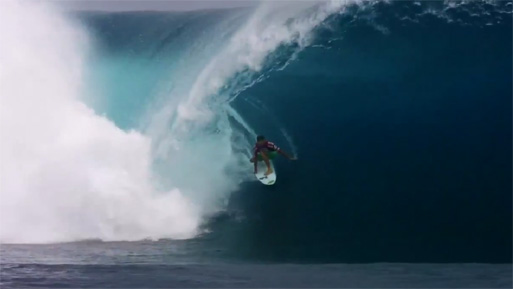 What’s the most intense surfing session you’ve ever had? Overhead? Double overhead? Hurricane swell? Storm rolled in and the conditions get incredibly bumpy, making it an adventure to paddle in? During this intense session, did you wipe out at all? While it felt like you were underwater for an entire minute, was it just 10 or 20 seconds? Was the water 20 feet deep?
What’s the most intense surfing session you’ve ever had? Overhead? Double overhead? Hurricane swell? Storm rolled in and the conditions get incredibly bumpy, making it an adventure to paddle in? During this intense session, did you wipe out at all? While it felt like you were underwater for an entire minute, was it just 10 or 20 seconds? Was the water 20 feet deep?
Imagine, if you will, a wave that has a 20 foot face, is thick and as heavy as a building and it breaks into a razor sharp reef that is just a couple of feet deep? You’d have a wave that is both loved and feared by the world’s very best and bravest surfers.
The wave I’m talking about is a blue wall of power, the mutant wave known as: Teahupoo. For those of you unfamiliar, allow me to introduce Teahupoo (Also spelled Teahupo'o, and pronounced "Cho-Po"
If you’re not convinced that Teahupoo is one of the most intense waves in the world, keep in mind that Teahupoo has only been surfed for about 15 years. For a long time, people thought it was far too steep to be surfable. They believed that if you caught the wave, you would eventually fall off…into razor sharp reef. It took several years of contemplation for the big wave surfing sensei, Laird Hamilton to take on the wave in 2000. He has since opened the door to Teahupoo, as it remains one of the world’s best big wave surfing locations, the site of numerous big-wave surfing competitions, like the Billabong Pro.
So what is the science behind Teahupoo? It’s a rather complex question, and we’ll start by looking at a quick overview of how waves form, and then move into specifically what goes on at this beautiful island in Tahiti.
How Waves Develop
What causes the waves we surf on? First thing to understand is that waves shouldn’t be considered moving water (Think about a floating buoy sitting in the ocean when waves pass by. It bobs up and down, not forward – waves move up and down as the energy passes through them). They should be considered moving energy. So where does the energy come from? Wind! As wind passes over the surface of water, friction between the air and water cause the water to ripple, which leads to more friction, and the wave grows.
So as we know, waves are moving energy. It’s not so much that the water moves when we look at waves, it’s the energy that is moving up and down, passing through the water. So after the wind creates moving energy in the ocean, the real magic happens....and it depends on what kind of break we have at our beach.
Breaking Waves
So picture the energy moving, rushing towards the beach. What determines when and how the wave transforms into a nice wave we can surf? Well, the shoreline. Surfable waves form when the water gets so shallow that the wave gets to heavy and collapses on itself. This happens when it approaches the shore, rocks, or reef. Depending on what causes the wave to collapse, will often determine the quality of the wave. Additionally, “breaking waves” can be interpreted to mean “the wave is broken”. As the model of a wave being moving energy gets thrown out, and the waves that we surf actually are moving water (it’s why seaweed get brought to the sand).
So what causes Teahupoo?
Teahupoo is an extremely interesting wave. Even when you compare Teahupoo to other big wave surfing spots, you’ll notice that Teahupoo’s major wow-factor isn’t its height, but it’s thickness (one of the biggest wave heights ever surfed was ~80 feet, Teahupoo reaches about 30 feet during a big swell). It’s literally like the ocean just gets raised to form a super-thick wave. Well that’s exactly what happens.
So basically, in Teahupoo, you have a massive, huge ocean full of energy, meet a very shallow break. This means a lot of water is going to have to go somewhere. It’s literally impossible for Teahupoo to look like your local break. Here, there is just so much water, and the ocean floor gets so shallow, so quickly, that the waves are known as surging waves.
A surging wave is formed when the water is very deep, and rapidly approaches a steep shallow shoreline. Surging waves will maintain their shape and form very little white water until very late in the wave. Surging waves have a very steep, flat face, move super fast, and eventually turns into a very steep plunging wave, which allows the surfer to get barreled. Take a look below to see the difference between wave types. More than likely, at your local break, you're riding just a plunging wave.
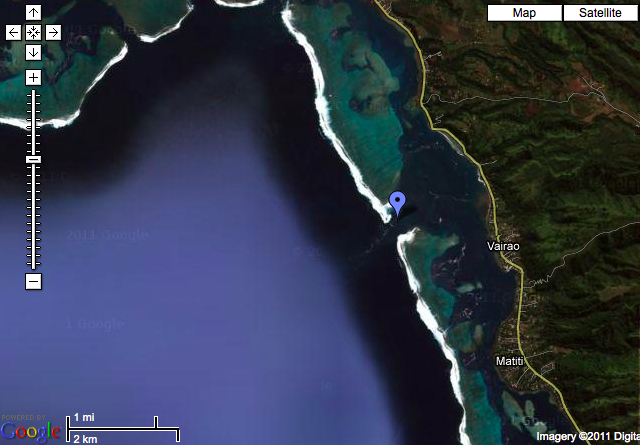
At the heart of Teahupoo is geology. Just like Hawaii, Tahiti is a chain of islands formed by volcanoes, known as an archipelago. The reef grows rapidly vertically, which results in a very steep break. Normally, a very steep reef break would form very large, yet sloppy waves, because the water has nowhere to go after it breaks – it just keeps getting sent on top of the reef, which would mean choppy, uneven waves.
However, when we look at Teahupoo, the waves are surprisingly clean. This is because there are several channels within the reef those shoots out water from the shore back into the deeper ocean. You can see these channels easily with a satellite image.
These channels in the reef are caused by the geology of the mountains of Teahupoo. Coral can only grow with a certain salinity (salt content). So when the fresh rain water gets sent down the mountains of Tahiti, it does so with a finger-like pattern. Creating a perfect set of channels in the reef to make Teahupoo’s waves nice and smooth.
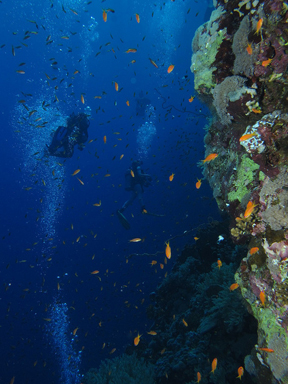
Are we starting to see why Teahupoo is extremely unique?
Where the channels are, the waves are much more gradual. This is why when we look at videos of Teahupoo, people can park their boats, jet-skis in this safe-zone. Where there is no reef, there is no wave. The channels also create a very fast current, which means that surfers must get towed out.
To create an even more unique set of conditions, the shore is extremely steep. This prevents coral from growing deep (they need sunlight to photosynthesize), and creating a more gradual wave.
The last unique characteristic of Teahupoo is that the wave does not seem to ripple like normal waves. The waves at Teahupoo look like the entire ocean is rising up. Well, remember that water being funneled out in the channels caused by the fresh water flowing from the mountains? That water being funneled out builds up the thickness of the wave.
Surfing Teahupoo, Tahiti is an aspiration for nearly all surfers. It's possible too! Without a big swell, the waves are about 5-7 feet, there is simply less water to create mammoth waves. Whether or not we ever make it to the Billabong Pro: Tahiti...well that's another story. It's amazing how many different aspects of nature, the wind, coral, water, and the mountains have created a truly unique wave, which I am sure will be talked about for hundreds of years into the future.
Writen by Michael Facchin
Mike is a surfer and biology teacher that blogs at Worldwide Stoke Surfing Videos




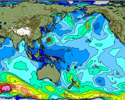
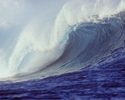


5 Comments